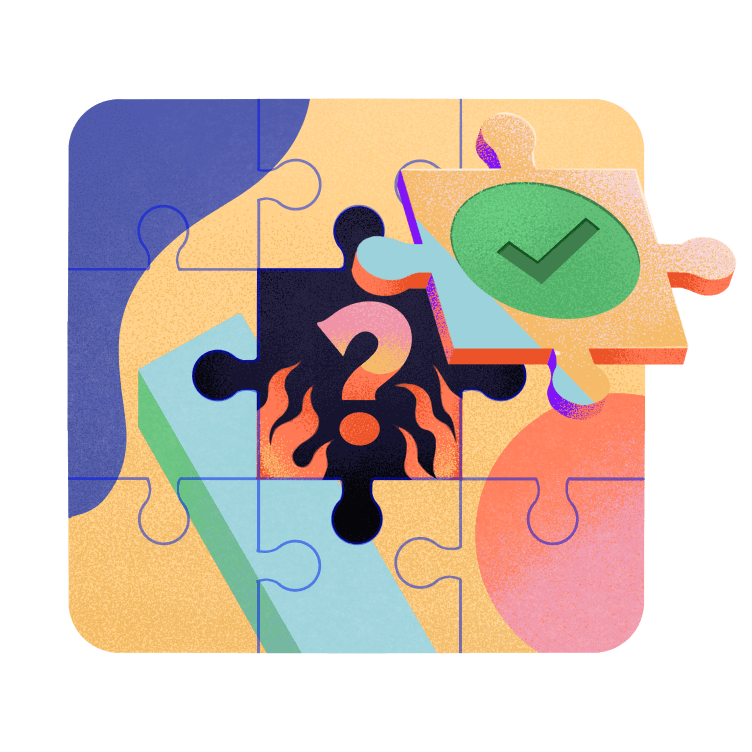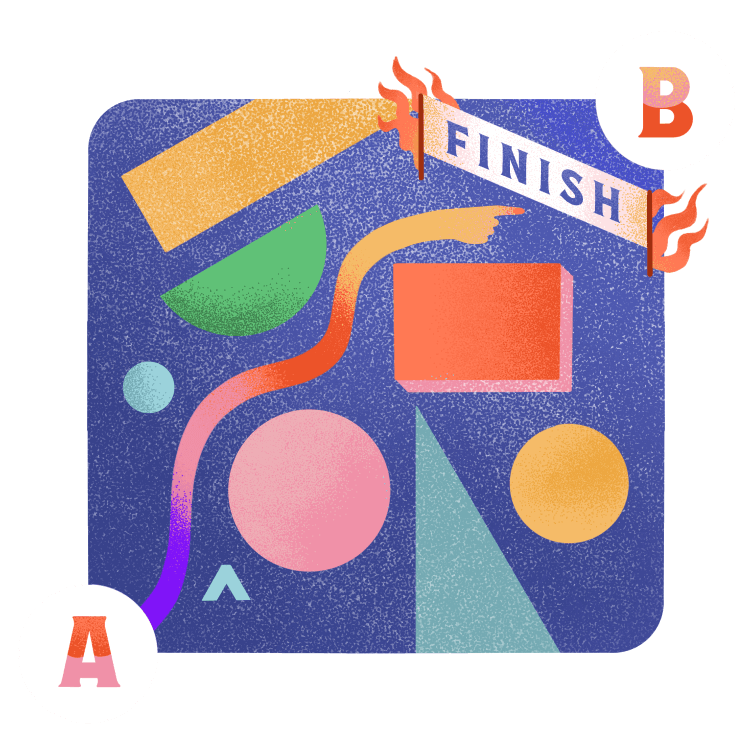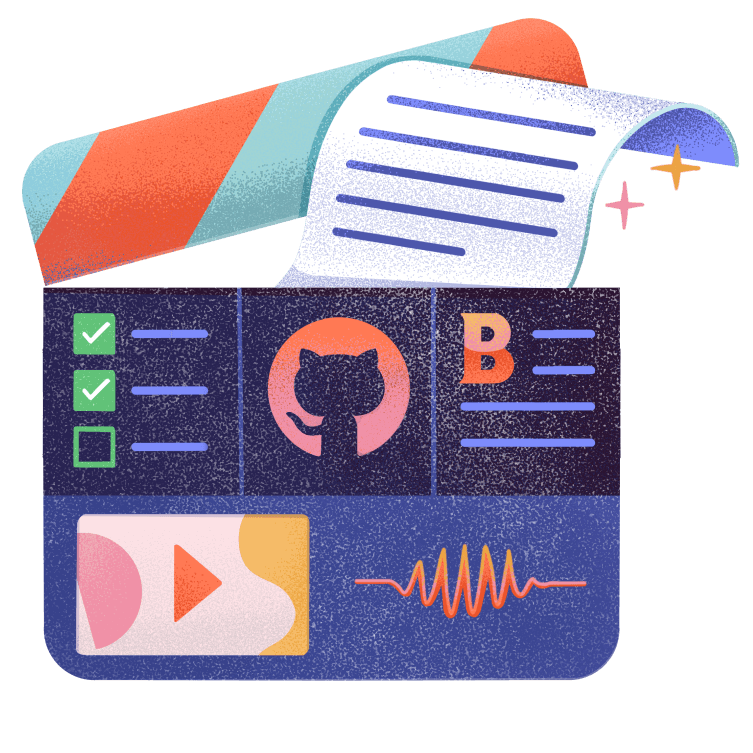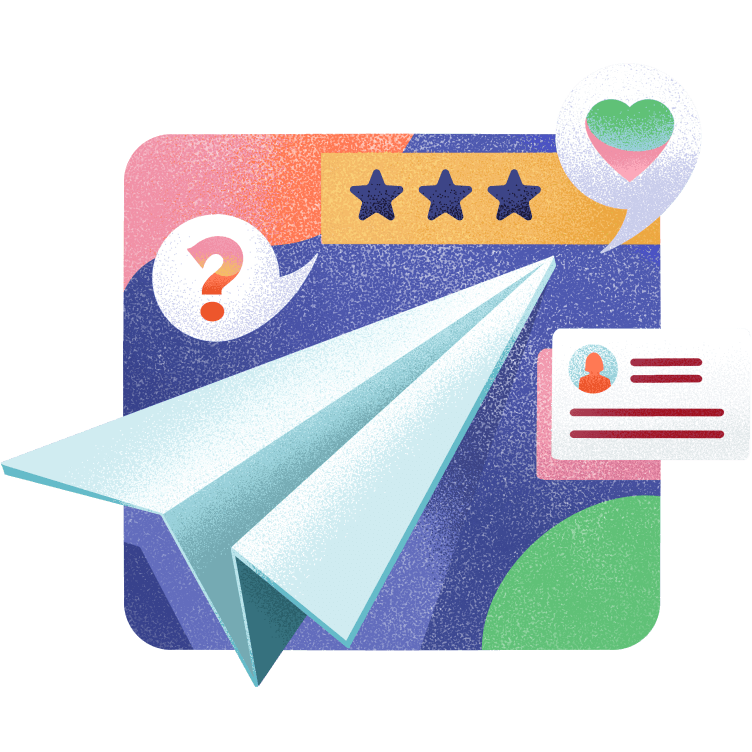We've produced a lot of courses. Hundreds. They've generated 10s of millions of dollars in revenue and helped hundreds of thousands of learners level-up as web developers. From the beginning we've focused on quality and being consistent, and to do that it's important to have a process.
Not too much, not too little. Just enough process to get everybody on the same page and speaking the same "language".
Our process has 4 distinct phases:
- Research
- Design
- Production
- Delivery
These phases are repeated, as needed for any given project. For example, the first iteration of a new course product might be a simple landing page. The goal of the landing page is to gauge interest.

Research
We will research the market, understand our audience, work with our subject matter expert partners, and do enough research work to provide a clue. Something to go on.
Sales Safari is an online ethnographical research method invented by Amy Hoy that continues to be an amazing source of research for our products. Here's a quick "in a nutshell" summary of the Sales Safari method. For a deeper dive, we also love Amy & Alex's Sales Safari 101.
Sales Safari is interesting because it focuses on "customers in the wild" where they are comfortable and discussing their pain and solutions with peers, using their "local" jargon.
Another approach is the one described in The Mom Test by Rob Fitzpatrick. In many ways this is the opposite of Sales Safari, because you are actively interviewing to learn more about the struggles, pain, and solutions that your audience of potential customers might have.
This is dangerous, because what people say in interview situations is often not what they actually do IRL. They aren't lying, they are just having a conversation. There's a power dynamic at play, and they will say what they think you want them to say trying to give the "right" answer.
It's called The Mom Test because if you explain your idea to your mom and ask her what she thinks about the idea, there is a better than good chance she will tell you it's "great!"
The Mom Test structure focuses on the interviewee and says that we won't go into pitch mode or start explaining our idea. We are interviewing THEM to learn about THEM.
It's not about you is a tough pill to swallow, but it's essential to getting at the truth underneath the conversational BS.
Beyond those methods we scour the internet, analyze existing solutions, and generally consider the problem space while taking notes and building shared context.
Research never stops.

Charlie Day in It’s Always Sunny in Philadelphia. FX Networks
But it's very important to stop researching and start doing. That's why we think about The Process as cycles instead of a linear start to finish. 🌀

Design
The most common first thought when you hear "design" is probably visual design, but for us design encompasses more than just the visual aspects of a project, though those are very important too.
- Visual Design
- Instructional Design
- Learner Experience Design
- Product Design
It's the capital-D Design that leverages the context that we've built during the Research phase and previous cycle of The Process and shape it into something interesting and valuable for learners.

Production
We know what we are building and why, so this is the "roll up our sleeves" and build. In a practical sense, for us, this is web development. We are building online learning experiences, and that means we are building websites.

Delivery
"If you build it they will come" is a crock of shit. It's just not true, and a recipe for failure. You have to share it. You've got to let people know.
Call it marketing, or a "launch", but once you've researched, designed, and produced something valuable and/or interesting for your audience it's time to let them know.
Once you've delivered something to your audience, something as small as a Twitter thread or landing page, or a full-fledged 60-hour video course you've finished a cycle of The Process.
Good.
Now you can start The Process again, using your new customers and everything you learned from all previous cycles as input for the Research and Design process.
It's a loop. Or better yet a spiral 🌀
We start loose, with a lot of unknowns and circle around the problem at ever increasing resolution, sharing what we learn, building valuable resources, sharing what we build, applying principled work, building trust, building relationships, and often thankfully earning a living.






